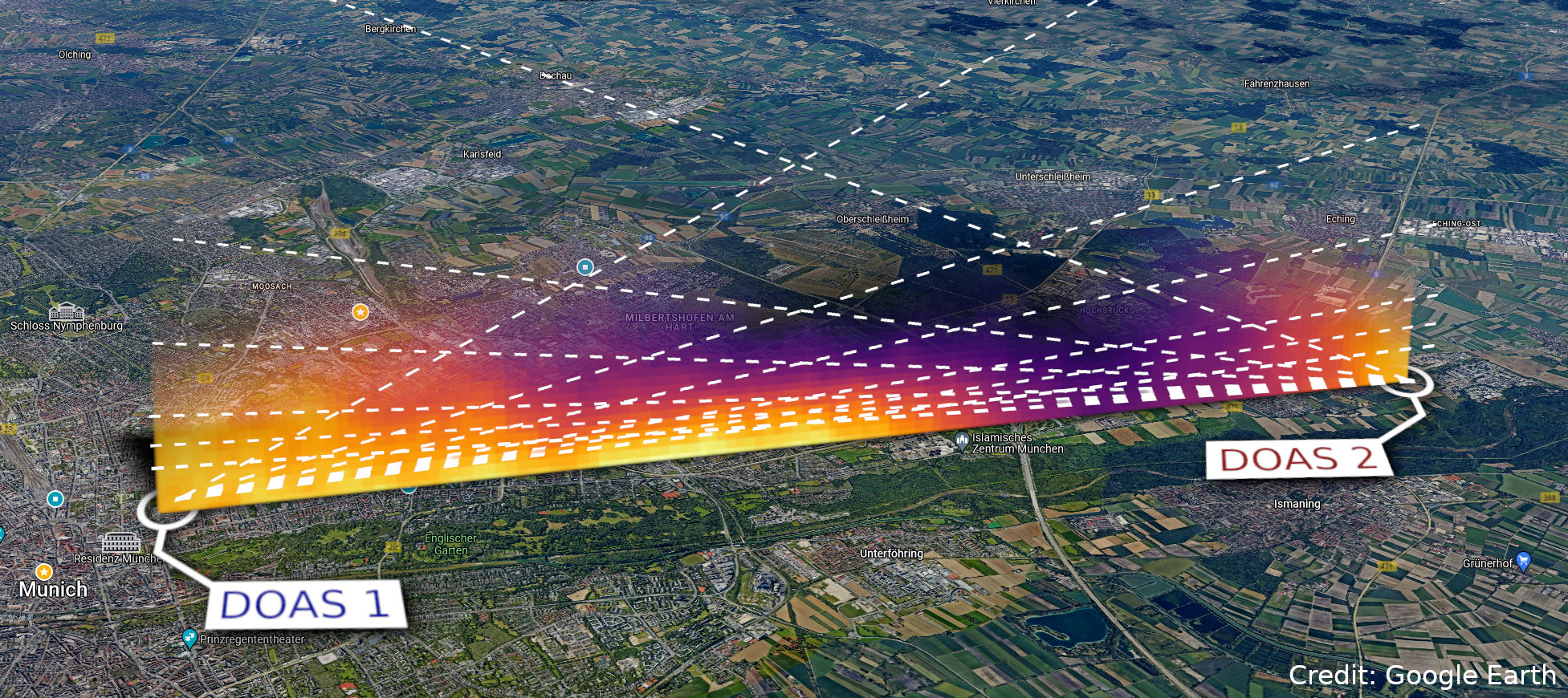Measurements of nitrogen dioxide over Munich using DOAS remote sensing
12.03.2024
Nitrogen dioxide (NO2) is one of the trace gases in the air. It is produced, among other sources, during the combustion of fossil fuels such as coal or oil, but also occurs as exhaust especially from diesel engines. It can significantly harm human health, with consequences including cardiovascular diseases and chronic respiratory issues. Short-term exposures can also cause acute respiratory problems and irritate the airways [1].
To gain an accurate understanding of how NO2 spreads in the environment, it is crucial to reconstruct the local distribution of its concentration. Precise mapping of NO2 concentrations enables governments and health authorities to make informed decisions to protect public health and develop measures to reduce NO2 emissions. Additionally, citizens can make informed decisions to minimize their exposure to NO2 and safeguard their health.
Our goal is to reconstruct the NO2 concentration over Munich. To this end, differential optical absorption spectroscopy (DOAS) is used. It relies on measuring the absorption of light by molecules in the air, enabling the calculation of the trace gas concentration, e.g. NO2. The challenge lies in deducing a local 2- or 3-dimensional distribution from our measurement data, which provide information about the NO2 absorber amount along a light path. Identifying the correct 2- or 3-dimensional local distribution from a multitude of possible solutions that could explain the measured data requires a specialized approach. It is called tomography and well known from applications in medicine. Instead of seeking a single distribution, this approach aims to estimate the probability distribution of all possible concentration distributions, considering the measurement data and previously known information such as the average possible change per meter. We implement this technique using an analysis software called NIFTy [2] , developed at the Max Planck Institute for Astrophysics.

Our initial measurements are based on an arrangement of two passive DOAS devices located on the Oskar-von-Miller Tower in Garching north of Munich (DOAS 2) and on our institute building in the city center (DOAS 1). These devices measure the concentration of NO2 along elevation angles. Using our tomographic reconstruction method, we can map the concentration of NO2 over Munich towards Garching. The preliminary result is shown in the picture above, indicating that the density over Munich is higher than over Garching, as expected. Brighter, "warmer" areas indicate higher density, while darker, "colder" areas represent lower density. Transparency indicates the uncertainty at each position. Beyond a 2-dimensional reconstruction, we aim to utilize this approach with active DOAS instruments to resolve the NO2 density in a smaller area in three dimensions. We are committed to further improving air quality monitoring and understanding the impacts of air pollutants.
Quellen:
- [1] https://www.umweltbundesamt.de/no2-krankheitslasten
- [2] Edenhofer, G., Frank, P., Roth, J., Leike, R., Guerdi, M., Scheel-Platz, L., Guardiani, M., Eberle, V., Westerkamp, M., and Enßlin, T.. (2024). Re-Envisioning Numerical Information Field Theory (NIFTy.re): A Library for Gaussian Processes and Variational Inference.

